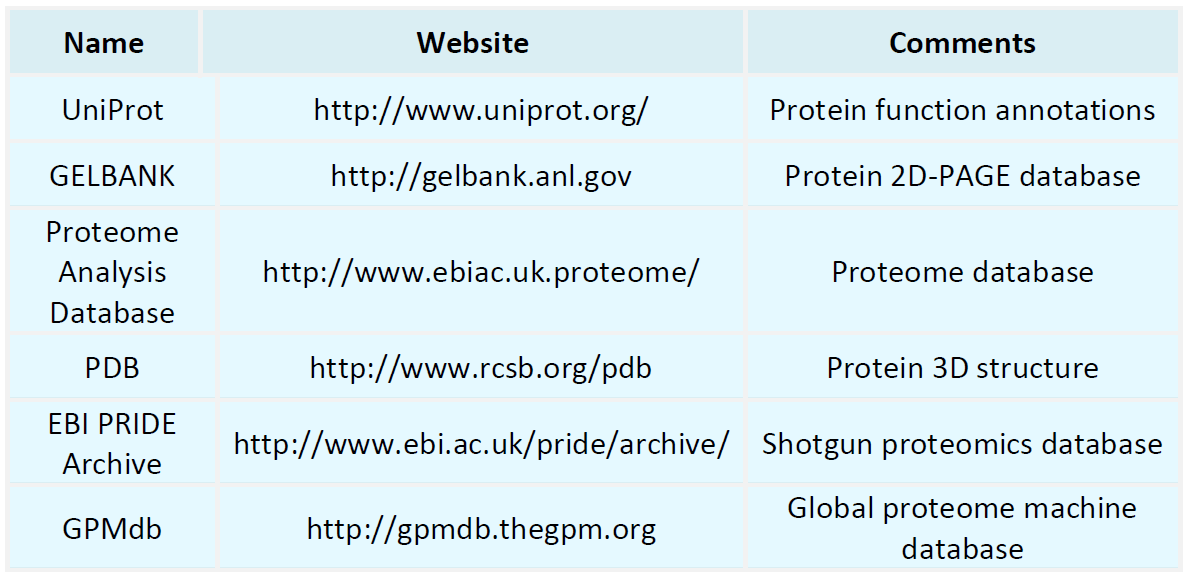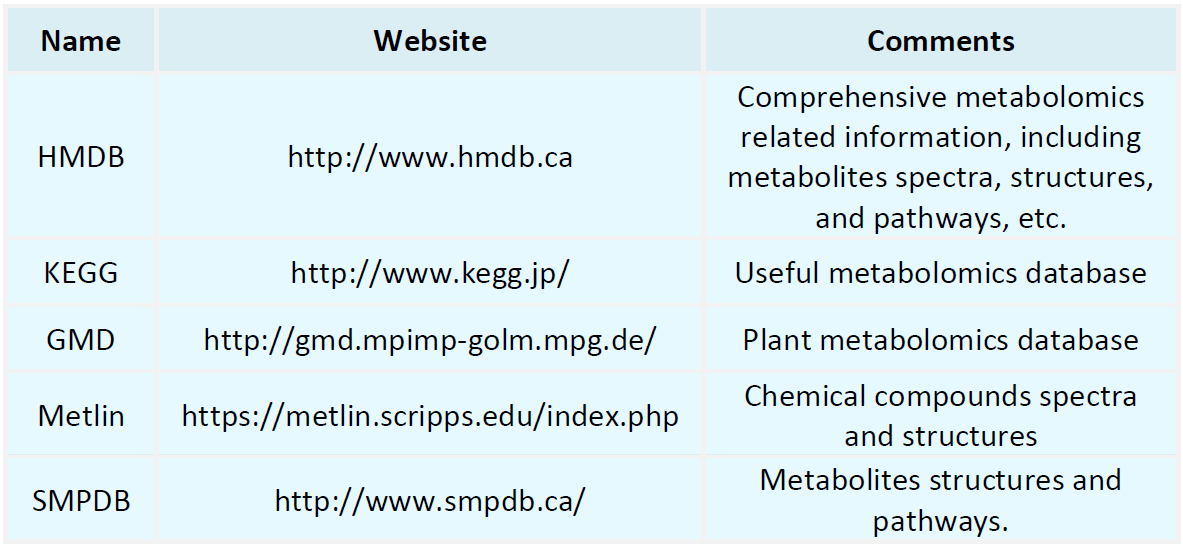Resources
Proteomics Databases

Metabolomics Databases

-
• How to Use Protein Sequence Analysis for Functional Prediction?
With the rapid advancement of high-throughput sequencing technologies, an increasing number of novel proteins have been identified. However, a significant proportion of these proteins remain functionally unannotated. In this context, protein sequence analysis serves as an essential initial step toward understanding protein function. This review systematically summarizes widely adopted strategies for protein sequence analysis and discusses how the integration of multiple bioinformatics tools can enhance.....
-
• Guide to Protein Sequence Alignment and Homology Analysis
Protein sequence alignment and homology analysis are essential tools in numerous areas of biological research, including protein function annotation, structure prediction, and evolutionary studies. By comparing amino acid sequences, researchers can rapidly infer the function of uncharacterized proteins, identify conserved domains, and trace the evolutionary history of protein families. This approach is grounded in the principle that conservation of protein structure and function is often mirrored in .......
-
• What Is the Difference between DNA Sequencing and Protein Sequencing?
In contemporary life science research, DNA sequencing and protein sequencing are two essential and foundational technologies, yet they differ substantially in terms of research objectives, methodological approaches, and biological significance. Broadly speaking, DNA sequencing reveals the blueprint of genetic information, whereas protein sequencing characterizes the functional status of the biological effectors. As precision medicine and multi-omics integration continue to advance, a clear understanding....
-
• Chemical Probe Technologies and Applications in Chemical Proteomics
In life sciences, the expression level of a protein does not necessarily reflect its functional state. Although proteomics can reveal changes in protein abundance under varying conditions, it often fails to capture the subset of proteins that are functionally active. To address this limitation, the field of chemical proteomics has emerged. Within this discipline, chemical probe technology plays a pivotal role. By designing chemical probes with tailored reactivity toward specific protein functionalities.....
-
• How Do Natural Products Identify Their Targets? Chemical Proteomics Provides the Answer
Natural products have long served as a vital reservoir for drug discovery, with over 50% of approved clinical drugs being either directly derived from or structurally modified based on them. However, their structural complexity and often elusive mechanisms of action have posed significant barriers to drug development. Particularly during early-stage screening, the absence of known molecular targets represents a major challenge to elucidating pharmacological mechanisms and guiding subsequent structural .....
-
• Solving Blocked N-Terminal Challenges in Antibody Development with Edman Degradation
Accurate determination of protein sequences is a fundamental step in the development of antibody-based therapeutics, essential for ensuring both efficacy and safety. However, chemical modifications or structural anomalies at the N-terminus of antibody molecules—collectively referred to as "N-terminal blocking"—often compromise the effectiveness of conventional sequencing methods. This persistent issue has become a technical bottleneck in antibody development. Edman degradation, a classical N-terminal.......
-
• Protein Sequencing: Methods, Technologies & Applications
Proteins are key functional components within cells, and their biological activity is determined by their precise amino acid sequences. Alterations in these sequences can significantly impact a protein’s structure, interactions, and function. Protein sequencing not only elucidates protein mechanisms but also plays a fundamental role in disease research, antibody development, and the identification of novel drug targets. Since the mid-20th century, sequencing technologies have evolved significantly—from.....
-
• What are the Benefits of Protein Sequencing
In the life sciences, proteins serve as the essential "working molecules" responsible for executing biological functions. Understanding a protein’s function requires first elucidating its primary structure—namely, its amino acid sequence. Protein sequencing, a critical technique for directly determining this sequence, has found wide applications in basic research, disease mechanism studies, and biopharmaceutical development. In contrast to genomics and transcriptomics, which offer predictions about what....
-
• Chemical Proteomics: Technical Limitations and Solutions
In the transition of proteomics from expression profiling to functional elucidation, chemical proteomics has emerged as a powerful approach for precisely identifying functional proteins, owing to its use of specialized molecular tools. This methodology centers on the covalent labeling of active sites, conformational states, or specific reactive residues via small-molecule probes, followed by targeted enrichment and mass spectrometry (MS) analysis to capture proteins involved in biological functions.
-
• Workflows and Data Analysis in Chemical Proteomics
Chemical proteomics is a methodology that integrates chemical probes with high-resolution mass spectrometry to systematically investigate protein functional states, molecular interactions, and small-molecule targets under in situ and native states. This approach holds significant promise in fields such as drug discovery, enzymatic function characterization, and post-translational modification analysis. In this article, we provide a comprehensive overview of the experimental workflows and data analysis .....
How to order?







